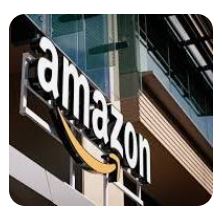
Amazon Shopping (Amazon.com): Revolutionizing E-Commerce
Introduction
Amazon.com, commonly referred to as Amazon, is the world’s largest online retailer and a dominant force in the e-commerce industry. Founded in 1994 by Jeff Bezos, Amazon began as an online bookstore and has since evolved into a global technology giant offering everything from electronics and clothing to cloud computing services and original content. Amazon.com, the company’s primary online shopping portal, is at the core of its operations, serving millions of customers worldwide with a user-friendly interface, massive product catalog, and efficient logistics network.
This article provides a comprehensive look at Amazon Shopping (Amazon.com), exploring its evolution, key features, business model, customer experience, criticisms, and its future in an ever-changing digital economy.
1. The Evolution of Amazon.com
Early Days
Amazon.com was launched in July 1995 by Jeff Bezos from his garage in Seattle, Washington. The website initially sold books online, which was a novel concept at the time. Bezos believed that the internet could fundamentally change retail and chose books because of their universal demand and relative ease of distribution.
Rapid Expansion
Amazon quickly diversified its product offerings. By the late 1990s, it began selling music CDs, DVDs, electronics, toys, and more. The company went public in 1997 and survived the dot-com bubble of the early 2000s, thanks to its strong customer focus and ambitious expansion plans.
Global Domination
Today, Amazon.com operates across multiple countries and supports hundreds of millions of products. It has become the go-to online shopping platform for many people around the globe. The website is available in numerous regional versions (e.g., amazon.co.uk, amazon.in, amazon.de) and offers localized shopping experiences with language support and regional product availability.
2. Features of Amazon.com
Amazon.com is renowned for its wide range of features designed to enhance customer experience and streamline online shopping.
a. Vast Product Selection
Amazon.com offers an unparalleled range of products. From household goods and fashion to electronics, groceries, books, and handmade crafts, the site is a one-stop shop for nearly anything a consumer might need.
b. Customer Reviews and Ratings
One of Amazon’s most popular features is its customer review system. Shoppers can read ratings and reviews left by other buyers, which help inform purchasing decisions. This transparency contributes significantly to consumer trust.
c. Personalized Recommendations
Amazon uses sophisticated algorithms and machine learning to provide personalized product recommendations. These suggestions are based on previous purchases, browsing history, and wish lists, making the shopping experience more intuitive.
d. Amazon Prime
Amazon Prime is a subscription-based service that offers benefits like free two-day shipping, Prime Video streaming, exclusive discounts, and early access to sales. As of 2025, there are over 200 million Prime members globally.
e. One-Click Ordering
Amazon pioneered the concept of “1-Click ordering,” allowing users to make purchases instantly with pre-stored payment and shipping information. This feature simplifies the checkout process and boosts conversion rates.
f. Wishlist and Gift Registry
Customers can create wishlists and gift registries for events like weddings, baby showers, or birthdays. This feature allows friends and family to purchase items the user truly wants or needs.
amazon.com usa3. Amazon’s Business Model
Amazon.com operates on a hybrid business model, combining first-party sales with a third-party marketplace.
a. First-Party Retail
Amazon buys products directly from manufacturers and sells them on the platform. These are often shipped from Amazon’s own warehouses and fulfilled via Amazon Logistics.
b. Third-Party Marketplace
A significant portion of Amazon’s inventory is offered by third-party sellers. These vendors list their products on Amazon.com, and the company takes a commission on each sale. Sellers can choose to fulfill orders themselves or use Fulfillment by Amazon (FBA), where Amazon handles storage, packing, and shipping.
c. Advertising Revenue
Amazon also generates revenue through its advertising platform. Brands and sellers pay to promote their products on search results pages, product detail pages, and across the Amazon ecosystem.
d. Subscriptions and Digital Services
In addition to physical product sales, Amazon earns money from Prime memberships, Kindle eBooks, Amazon Music, Audible, and cloud services via Amazon Web Services (AWS).
4. The Customer Experience
Amazon has earned a reputation for being customer-centric. This philosophy is reflected in several aspects of the shopping experience:
a. Easy Navigation and Search
Amazon’s website is designed for ease of use, with a powerful search engine, clear categorization, and filters. This makes finding products quick and intuitive.
b. Fast and Reliable Delivery
Thanks to its advanced logistics infrastructure and partnerships with local carriers, Amazon offers fast delivery, including same-day and one-day options in many regions.
c. Secure Payment and Refunds
Amazon supports various secure payment methods and offers a straightforward return and refund process. Customers can often initiate returns with just a few clicks.
d. Customer Support
Amazon offers robust customer support via chat, email, and phone. It’s known for resolving issues quickly, such as refunding faulty purchases or replacing missing items.
5. Impact on Retail and Society
Amazon.com has had a profound effect on global retail, economics, and consumer behavior.
a. E-commerce Growth
Amazon played a crucial role in accelerating the adoption of online shopping. Its ease of use and reliability helped overcome early consumer skepticism about buying products online.
b. Disruption of Traditional Retail
Brick-and-mortar retailers have struggled to compete with Amazon’s pricing, convenience, and product range. Many traditional chains have downsized or gone out of business, unable to keep up with the e-commerce giant.
c. Small Business Empowerment
While Amazon has disrupted traditional retail, it has also empowered small businesses. Independent sellers can reach a global customer base through Amazon Marketplace, often with minimal upfront investment.
d. Consumer Expectations
Amazon has redefined what consumers expect from online retailers: fast shipping, low prices, easy returns, and personalized experiences. These high standards have forced competitors to adapt or risk losing market share.
